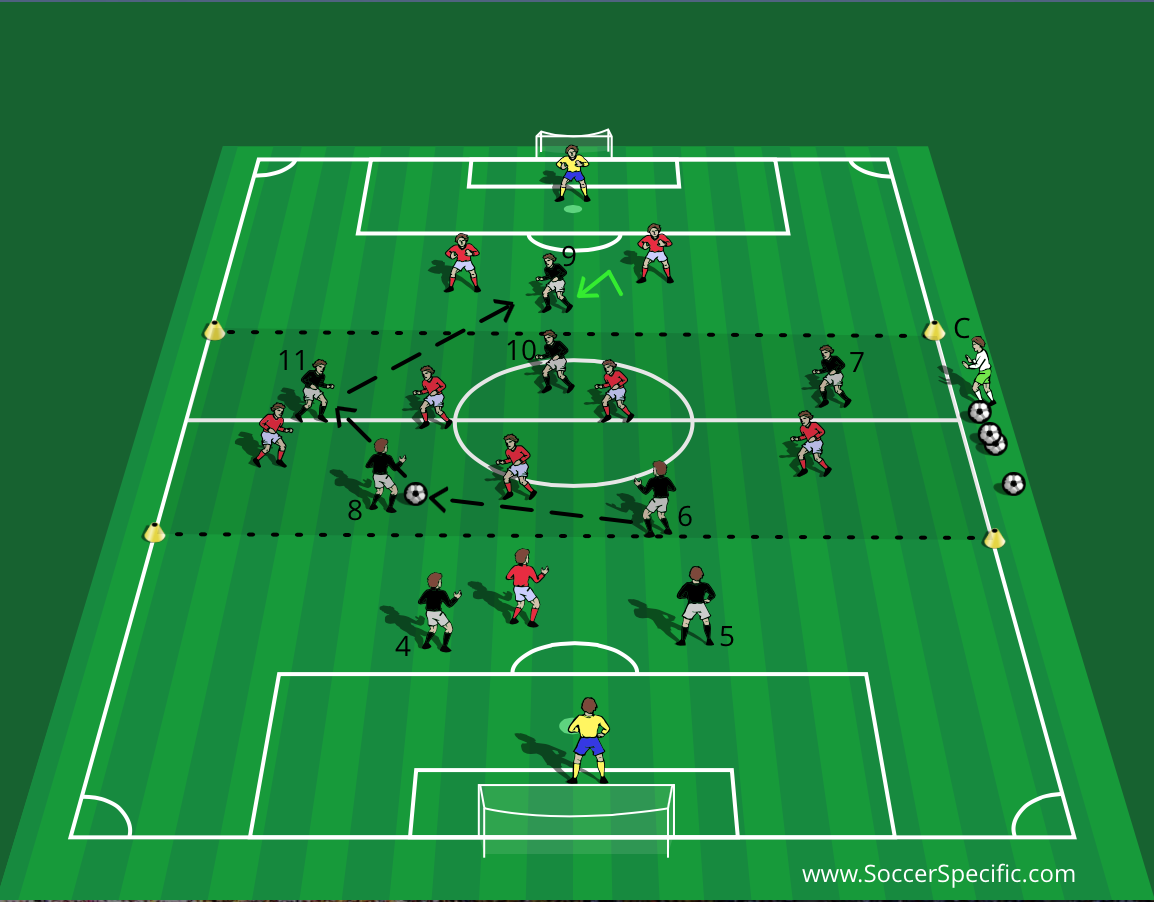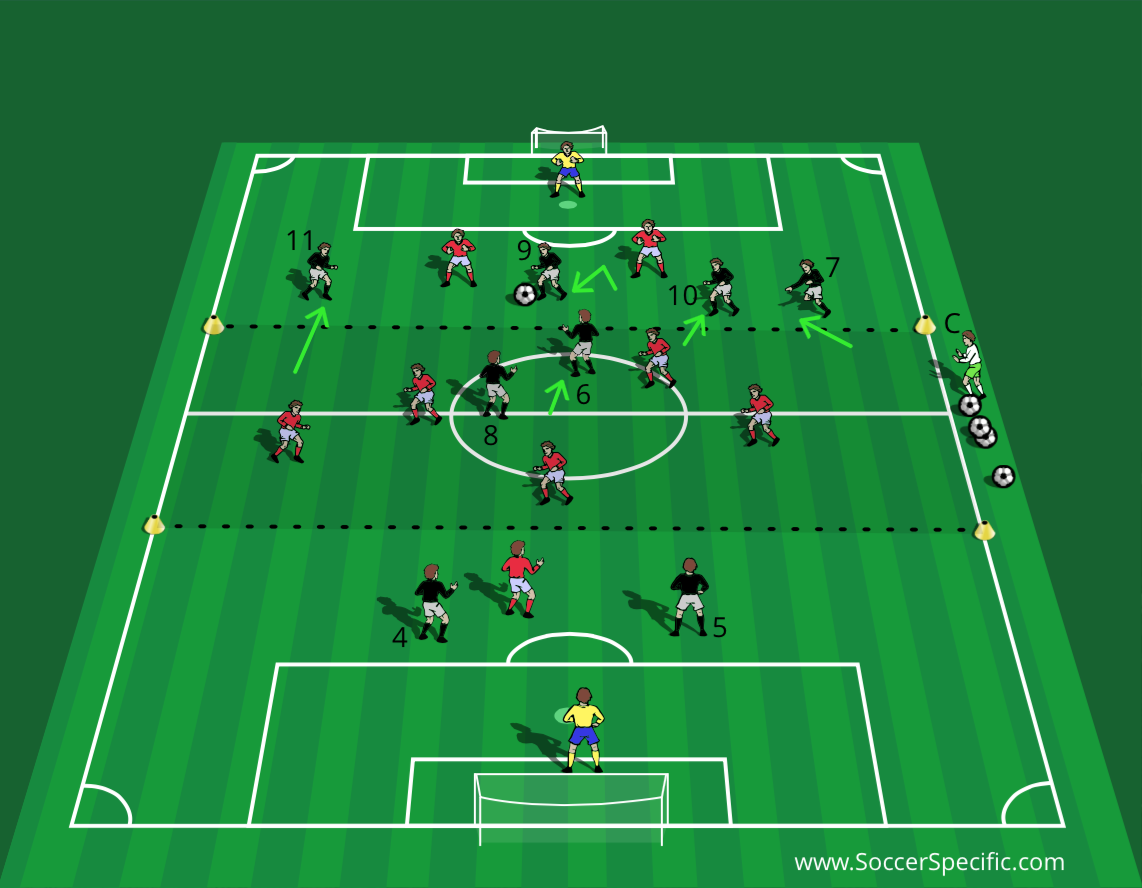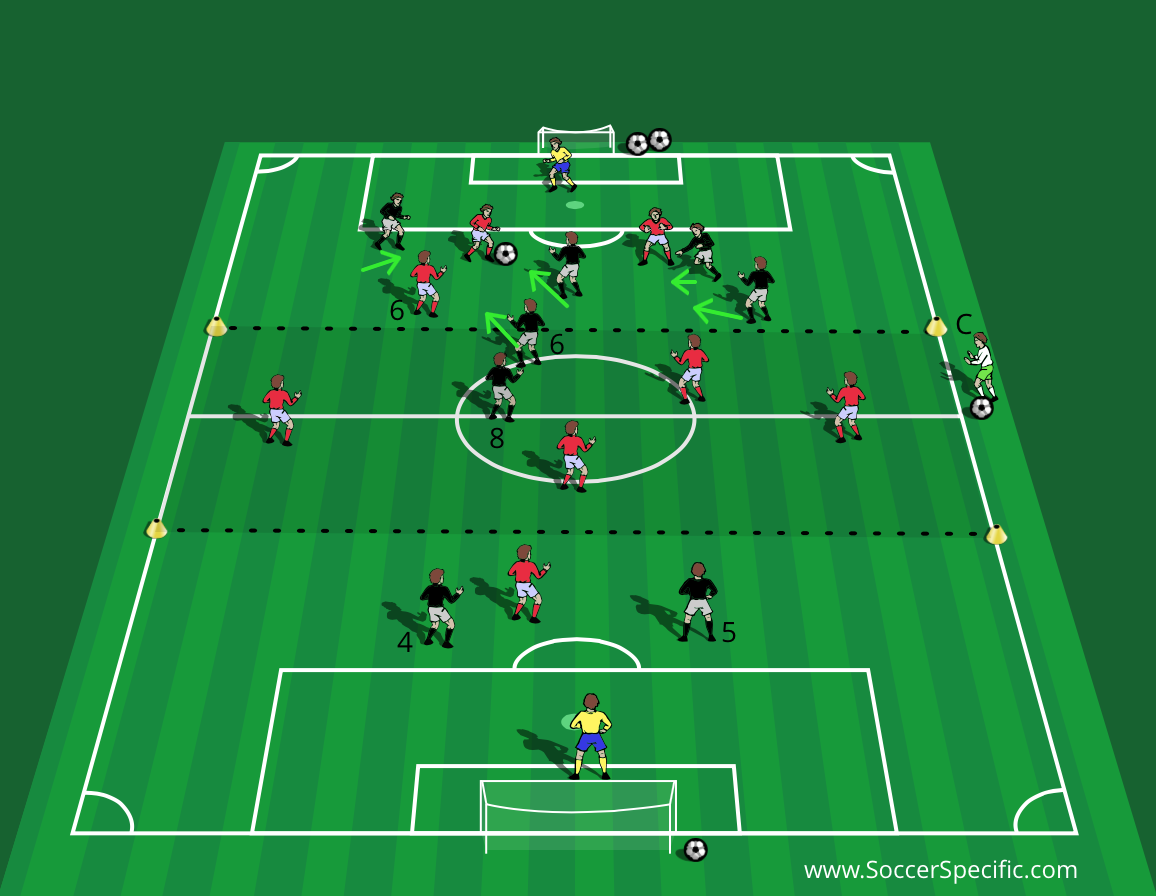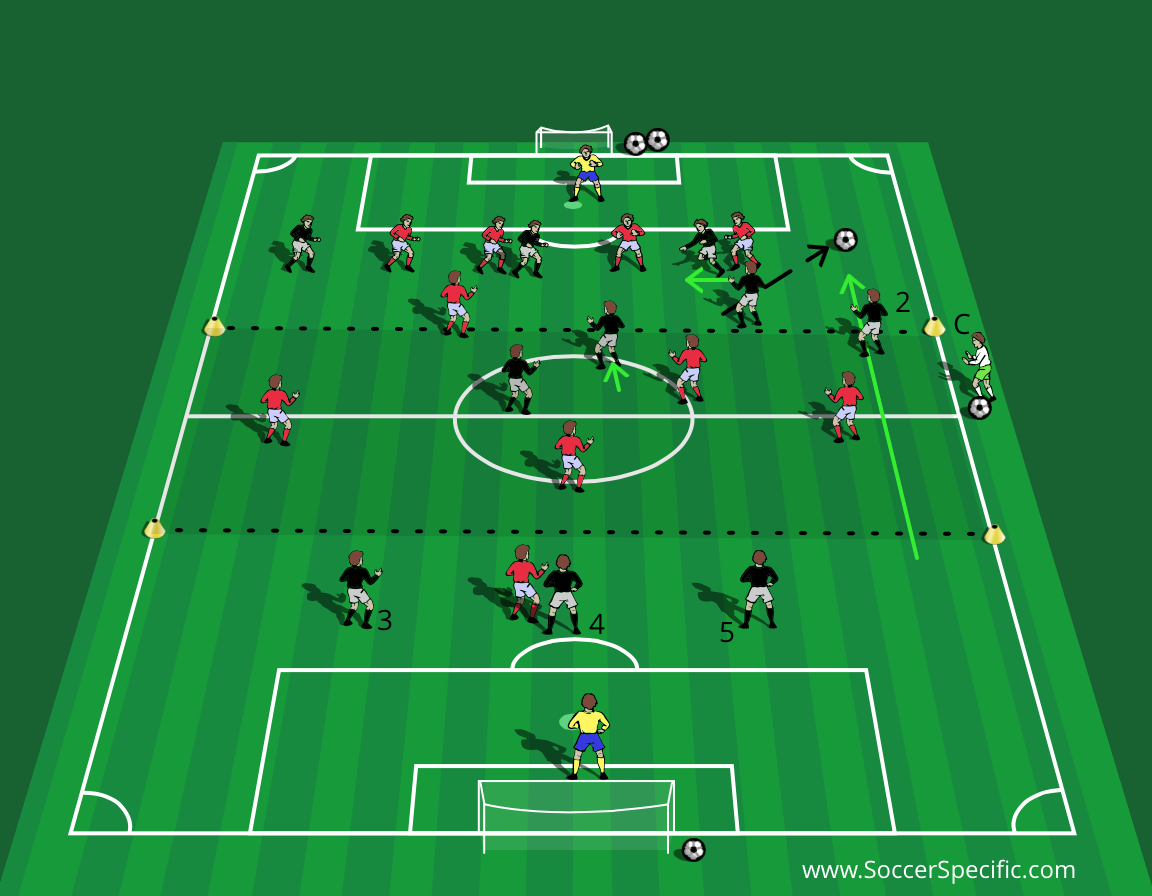Many teams utilise a 1-4-2-3-1 formation due to its flexibility both in attacking and defensive phases of the game.
The following activity (and progressions) utilises the 1-4-2-3-1 formation as a starting point to develop various tactical components. The activities primarily emphasise attacking principles; the creation of overloads in advanced areas of the pitch, fast transitions to attack as well as counter-attacking. Transitions to defend are also coached within the activity.
The session progresses from a restricted 9v9 3-zone activity and finishes with an 11v11 un-restricted game.
1.
Setup:
Two teams consist of Goalkeeper, 2 Central Defenders (4,5), 2 Central Midfielders (6,8), Right + Left wide players (7,11), withdrawn Forward (10) and a target Striker (9), **Fullbacks are not included at this stage.

Instructions:
Play begins with a pass from the Coach (C) to either team in the central area – this is a 5v5 situation. The team in possession must look to play forward to the #9 as quickly as possible; after the pass to #9 three players (7,11,10) from the central zone must break forward to the attacking zone – this creates an advantage for the attacking team (5v2+Gk).
After a shot / attempt at goal the Coach starts the next ball to the opponent team in the central zone – this creates a 5v2 centrally; the emphasis now is a quick counter-attack before the opponent can transition back.
Play is continuous.
Coaching Points:
- Attacking Team:
- Look to play forward quickly
- Supporting runs from central area – 7,11,10 and possibly 6 or 8 can join the attack
- Counter-Attacking:
- Movement of #9 to offer a sufficient target
- Explosive runs from central area to support
Activity 1 Continued Explanation:
In the Diagram #9 has received a pass to feet; #11,7,10 have sprinted forward to create an attacking overload; #6 has also moved forward to offer support.
The attacking team must attempt to score within 6-10 seconds (no long passing sequences within the attacking zone!)

Coaching Points:
- Attacking Team:
- Look to play forward quickly
- Supporting runs from central area – 7,11,10 and possibly 6 or 8 can join the attack.
- Counter-Attacking:
- Movement of #9 to offer a sufficient target.
- Explosive runs from central area to support.
- Defensive Transitions:
- Think ‘next action’ – on a loss of possession retreat as soon as possible.
3.
Setup:
Two teams consist of Goalkeeper, 2 Central Defenders (4,5), 2 Central Midfielders (6,8), Right + Left wide players (7,11), withdrawn Forward (10) and a target Striker (9), **Fullbacks are not included at this stage.

Instructions:
Progression (1):
Allow one of the C. Mid players for the Defending team track back – this creates a 5v3+Gk.
Now we have 2 options to re-start the next ball – (1) Coach introduces the next ball to immediately start the Counter-Attack in the opposite direction, (2) if the Goalkeeper gains possession he can throw to #6 or #8 who can receive un-opposed – now the Counter-Attack starts from the time #6 or #8 gets possession; this allows the transition team extra time to get back to defend.
Coaching Points:
- Attacking Team:
- Look to play forward quickly
- Supporting runs from central area – 7,11,10 and possibly 6 or 8 can join the attack
- Counter-Attacking:
- Movement of #9 to offer a sufficient target
- Explosive runs from central area to support
4.
Setup:
Two teams consist of Goalkeeper, 2 Central Defenders (4,5), 2 Central Midfielders (6,8), Right + Left wide players (7,11), withdrawn Forward (10) and a target Striker (9), **Fullbacks are not included at this stage.

Instructions:
Progression (2): Introduce Counter-Pressing –
In the Diagram the Defensive team (Red) has won possession; now the instruction to the Black team is to try to regain possession as quickly as possible within the attacking 1/3 of the pitch; this tactic of ‘Counter-Pressing’ allows a team the potential to regain possession in an advanced area of the pitch.
Award 2 goals for scoring after regain possession through Counter-Pressing.
Coach dictates when next ball enters play in the central zone.
Coaching Points:
- Attacking Team:
- Look to play forward quickly
- Supporting runs from central area – 7,11,10 and possibly 6 or 8 can join the attack.
- Counter-Pressing:
- Immediate pressure on the ball; close passing lanes and options as quickly as possible.
- Defensive Transitions:
- Think ‘next action’ – on a loss of possession retreat as soon as possible.
5.
Setup:
Two teams consist of Goalkeeper, 2 Central Defenders (4,5), 2 Central Midfielders (6,8), Right + Left wide players (7,11), withdrawn Forward (10) and a target Striker (9).

Instructions:
Progression (3): Add Fullbacks for each team (now 11v11) –
Allow Fullbacks to break forward to join the attack. In the Diagram, the Right Fullback has burst forward to offer support.
Coach dictates when next ball enters play in the central zone.
Coaching Points:
- Attacking Team:
- Look to play forward quickly
- Supporting runs from central area – 7,11,10 and possibly 6 or 8 can join the attack
- Counter-Pressing:
- Immediate pressure on the ball; close passing lanes and options as quickly as possible
- Defensive Transitions:
- Think ‘next action’ – on a loss of possession retreat as soon as possible
